TRUE SUNSHINE EPISCOPAL CHURCH
PAST, PRESENT, and FUTURE
1430 MASON STREET, SAN FRANCISCO, CA 94133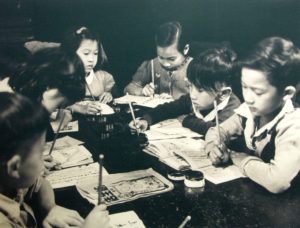
True Sunshine Church has been in the Chinese community for 115 years. Because the Chinese community in San Francisco has always been one of immigrants and their offsprings, it has the particular needs of people and families in a strange land. Adaptation and making a living are tasks certainly made more difficult by having to learn a new language, new customs, and culture. Evangelism among such people, bringing them the Christian message of salvation through works of love has been and will always be the mandate of True Sunshine. Being almost right in the heart of the Chinese community, the parish faces all the hard challenges of an inner-city church; however, that’s where all the action is. The history of True Sunshine tells the story of these challenges and how they were met. It is a rich missionary field and the harvest can be plentiful.
Planting of the First Seeds and Early Harvest (1903-1944)
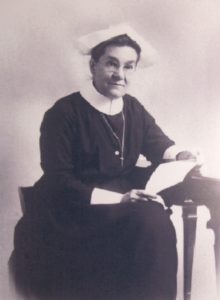 The Episcopal Church in this Diocese began evangelical work among the Chinese in 1903 when Deaconess Emma Drant organized the first Chinese Episcopal mission in San Francisco. The work grew from time to time and the mission was officially established in 1905. The first building, built after the 1906 Earthquake, was at 966 Clay Street.
The Episcopal Church in this Diocese began evangelical work among the Chinese in 1903 when Deaconess Emma Drant organized the first Chinese Episcopal mission in San Francisco. The work grew from time to time and the mission was officially established in 1905. The first building, built after the 1906 Earthquake, was at 966 Clay Street.
Deaconess Drant had worked in Hawaii and knew that in order to be effective among the Chinese, she had to learn Cantonese. For several years, while in Honolulu, prior to coming to San Francisco, she employed a young man, Wu Gee Ching, as her tutor, and she in return taught him English. During this association, Wu Gee Ching was converted and baptized, taking the Christian name, Daniel. His full name became Daniel Gee Ching Wu. This faithful, inspired convert was to be the key to the success of Emma Drant’s work.
The 1906 Earthquake and Fire played a crucial role in the life of True Sunshine, both in San Francisco and Oakland. After the disaster, many Chinese moved from San Francisco to Oakland. Consequently, the work of the church moved with them. At this time Deaconess Drant needed help, and in 1907, Daniel G. C. Wu answered her call to come to San Francisco from Hawaii. In 1908, Deaconess Drant, with Daniel Wu’s help started a mission in Oakland. Although still a layman, he took on the task of running the missions, firmly establishing the one in Oakland, and ministering to both congregations. Aspiring to become an ordained priest, he was admitted as candidate in September 1909. He studied at the Church Divinity School of the Pacific, and the same time attending to his lay ministry at both missions.
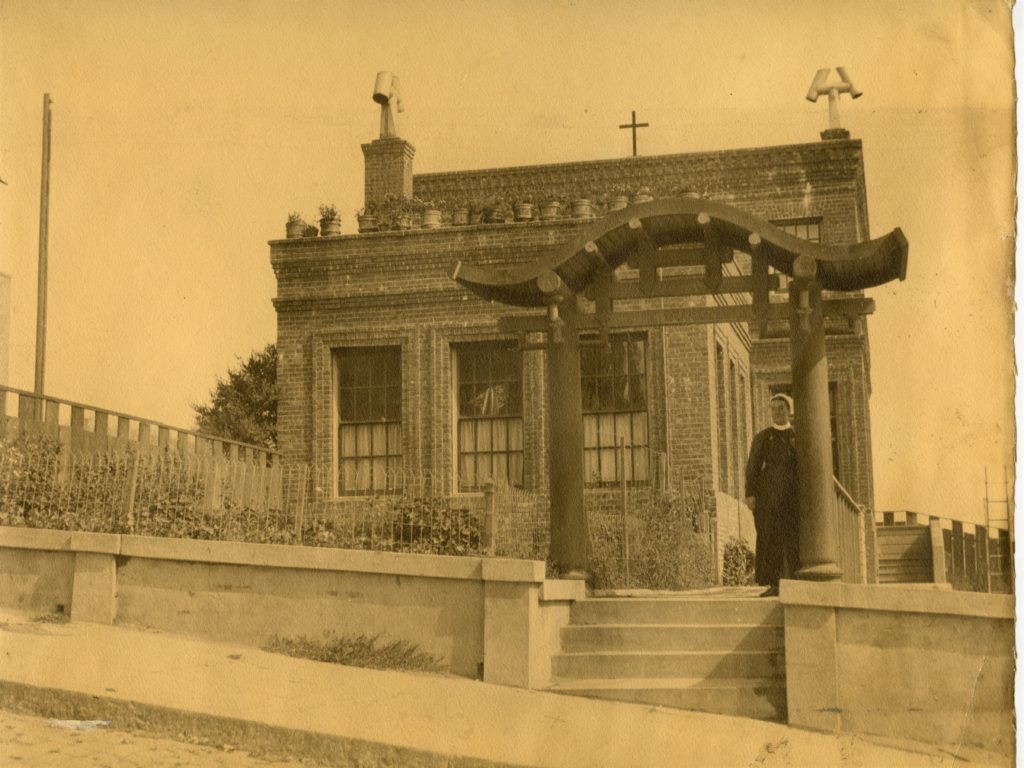
In 1910 Deaconess Drant relinquished her work in the diocese in order to move back East to attend to her brother. This move left Daniel Wu the burden of both missions. After graduation from the seminary in 1912, he was ordained Deacon, in 1913, Priest, and became the vicar of both missions. The task was difficult, but with the help of other parishes, both missions grew. Ministering to Chinese immigrants and their families was a major part of Fr. Wu’s work. At True Sunshine, he established a Chinese language school for children, and evening English classes for new arrivals from China, many of whom he met at the docks and the immigration station on Angel Island. There were also sewing classes for women. Fr. Wu also established the same programs at True Sunshine, Oakland. This mission was subsequently renamed Our Saviour. For 36 years, he bored the burden of caring for both congregations. He had many coworkers, and together, they brought many into the church. To accommodate a larger congregation and providing for a larger vicarage, the Clay Street building was expanded during his tenure.
At the time of Fr. Wu’s retirement, the Rev. Clarence Lee was called from Canada to serve as Vicar and served from 1944 to 1955. During his tenure there was growth of the congregation and expansion of the young people’s fellowship. Plans were being made for enlarging the Clay Street facilities, but it was not to be.
Up-Rooted and Replanted
In 1950 the city took over the Clay Street site in order to expand an adjacent public school. The congregation had to move to a makeshift chapel in the old crypt of Grace Cathedral. Members were scattered because of this upheaval, but a nucleus remained.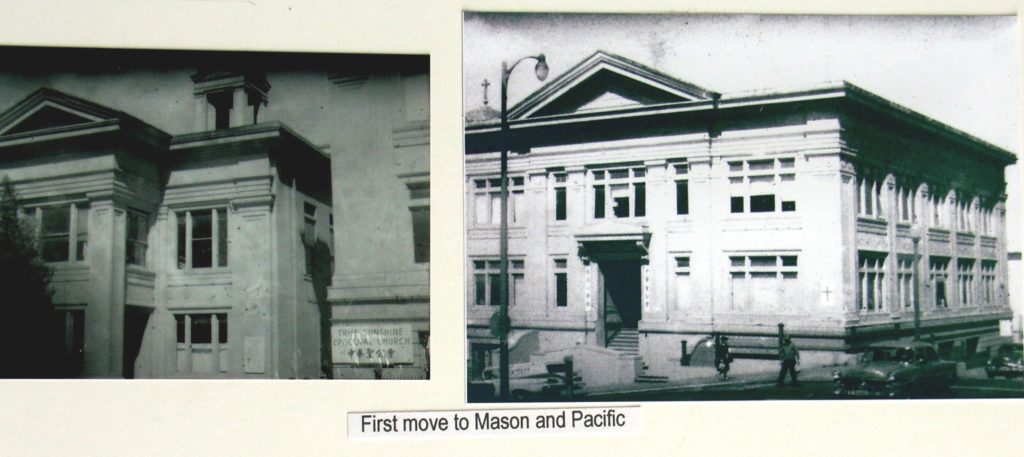
Through the vision of Bishop Block, the Diocese bought a large property, which was a large Roman Catholic parochial school with a large adjacent residence occupying the corner of Mason Street and Pacific Avenue. At the time of the move back from exile in 1951, Fr. Lee was still vicar. Under his ministry and that of the next three successive vicars, Fr. Stephen Ko, Fr. Theodore Yeh, and Fr. Thomas Chesterman, the congregation thrived.
In 1956, Fr. Ko, who was the Vicar of the Church of Our Saviour, Oakland, was assigned to be in charge of True Sunshine also. He led a fund drive to raise money for sharing the cost of purchase of the Mason Street property and refurbishing the old buildings. Before the project was fully under way Bishop Block decided to change the leadership and assigned Fr. Theodore Yeh as Vicar. Fr. Yeh served from 1957 to the end of 1959.
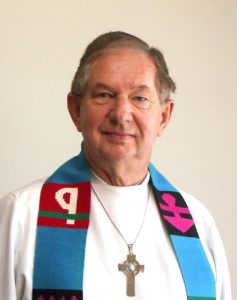 Fr. Chesterman was appointed Vicar in February, 1961, and he served for five years. He conducted bilingual worship services by using lay people as interpreters and lay readers. Under his leadership, and having the use of the large facility, the membership in all age groups grew. The old auditorium was made into the worship space. There was a large Sunday school, a Chinese language school with about 100 students, a senior and junior choir, and many adult and young people’s activities including an active Boy Scout troop.
Fr. Chesterman was appointed Vicar in February, 1961, and he served for five years. He conducted bilingual worship services by using lay people as interpreters and lay readers. Under his leadership, and having the use of the large facility, the membership in all age groups grew. The old auditorium was made into the worship space. There was a large Sunday school, a Chinese language school with about 100 students, a senior and junior choir, and many adult and young people’s activities including an active Boy Scout troop.
In 1966, during the episcopacy of Bishop Pike, to the dismay of the congregation, the Diocese sold the large Mason and Pacific property, leaving True Sunshine only a small 52×80 foot empty lot. This was done without consultation with the congregation, and because we were a mission, we had no part in the decision. We were just informed that we had to move, disbanding the congregation and its works. At the diocesan level during those years, there was no vision for doing evangelical work among the minorities. Bishop Pike felt that all people should worship together at existing local churches and that there should be no ethnic churches. All the progress of the previous five years came to a halt. Again, members were scattered during the move to temporary quarters in a basement room at Grace Cathedral. Fr. Wesner was priest-in-charge during this time of turmoil. Again, the congregation dwindled; however, there remained a nucleus of the faithful.
The Second Replanting
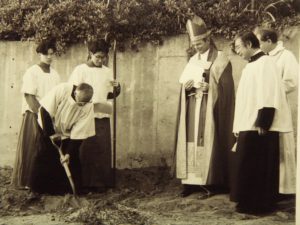 In 1968, while the congregation was still at Grace Cathedral, Fr. James S. W. Pun was called from Hong Kong by Bishop Myers to be Vicar. In 1972, a small multi-purpose building was built on the small lot, and the congregation moved back to Mason Street.
In 1968, while the congregation was still at Grace Cathedral, Fr. James S. W. Pun was called from Hong Kong by Bishop Myers to be Vicar. In 1972, a small multi-purpose building was built on the small lot, and the congregation moved back to Mason Street. 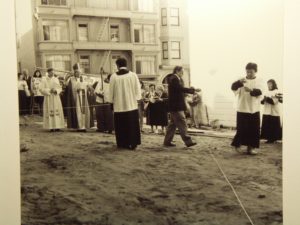
For a short time, Fr. Victor Wei assisted as Deacon for Fr. Pun, and then as Co-Vicar until Fr. Wei left to become Vicar at the Church of Our Saviour, Oakland. True Sunshine Day Care Center shared the space with the church. In 1973, True Sunshine became sufficiently self-supporting to become a parish under the leadership of Fr. Pun, who became the first Rector. He was instrumental and participated in the development of many organizations, such as the Chinese Newcomers Services, and the Episcopal Asiamerica Ministries (EAM). He retired in 1984.
A New Era
After Fr. Pun’s retirement, the Rev. Fran Toy served as Interim, and Fr. Donald Fox succeeded her as Long Term Interim and was subsequently elected as Rector in 1988. Fr. Fox served 9 years. During this time, a very successful fund raising campaign enabled a new chapel to be built. Although he did not speak Chinese, Fr. Fox was successful in his ministry by using interpreters and lay readers. He resigned in order to become the Night Minister in the San Francisco Night Ministry. Fr. James Hargis served as Interim for about two years, then left to become the rector of a congregation in Hawaii. Following him, the Rev. Mary Atwood ministered to the congregation for about a year. During this time of interims, True Sunshine undertook a long search for a Cantonese-speaking priest to carry on the work. It has been the experience at True Sunshine that priests who did not speak Chinese were able to find ways to make good connections with the older Chinese-speaking portion of the congregation. However, for the home-mission work among Chinese newcomers, a bilingual priest was the first priority.
The search for this hard-to-find priest to fill this position continued for several long years. Finally, in answer to our prayers, Fr. Franco Kwan answered our call. Palm Sunday 1999 was his first service at True Sunshine. With his rich experience in serving many ethnic groups, social work, and community work, he will lead True Sunshine into a new era. God provides.
Looking back through a history of 115 years, there have been good times and hard times. True Sunshine not only has survived but is finding herself poised to enter the New Millennium to work in the Chinese community. During Fr. Fox’s time a few years ago, the congregation raised all the money to complete a $1.2 million dollar project, adding a chapel to the multipurpose building. We are now in the process of planning for further expansion to accommodate many new programs which have grown since the coming of Fr. Kwan. The foundation laid many years ago is firm. Through difficult times, the congregation’s loyalty and faith have been the main ingredients for the success of God’s work.
In celebration of the 150th Anniversary of the Diocese of California, and as a part of Colors of Diversity, we take pride in presenting this summary of the long history of True Sunshine Parish. As a preview of many good things to come, we are showing the following exciting programs in pictures.

